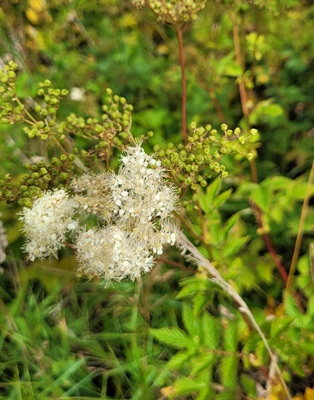Flower Properties
| Property | Value |
|---|---|
| English Name | Meadowsweet |
| MainColor | White |
| PlantType | |
| Growth Type | |
| Season | August |
| ImageUrl | Filipendula-001 |
| Photographer | DP |
| Location | Cheshire |
| Human Toxicity | Non_Toxic |
Flower Details
Description
Meadowsweet is a perennial herb characterised by its feathery, fern-like leaves and clusters of fragrant, creamy-white flowers. It typically grows in damp meadows and along riverbanks, reaching heights of up to 1.2 metres.
Distribution
This plant is native to Europe and parts of Asia, often found in wet, grassy areas and woodlands. It thrives in temperate climates and is commonly seen in the UK.
Medicinal/Other Uses

✅ Meadowsweet has been traditionally used to alleviate digestive issues and as an anti-inflammatory remedy. Its flowers are also used to flavour beverages and herbal teas.
Edibility

The flowers and leaves of meadowsweet are edible and can be used to make herbal teas or as a flavouring in desserts. However, they should be consumed in moderation.
Human Toxicity
Individuals with allergies to aspirin or salicylates should avoid meadowsweet, as it contains similar compounds. Always consult a healthcare professional before using it for medicinal purposes. Human toxicity: meadowsweet is generally safe for human consumption in moderate amounts.
Pet Toxicity

Non Toxic - meadowsweet is not known to be harmful to pets when ingested.
Active Compounds
Meadowsweet contains salicylic acid, flavonoids, and tannins, which contribute to its anti-inflammatory and analgesic properties.
